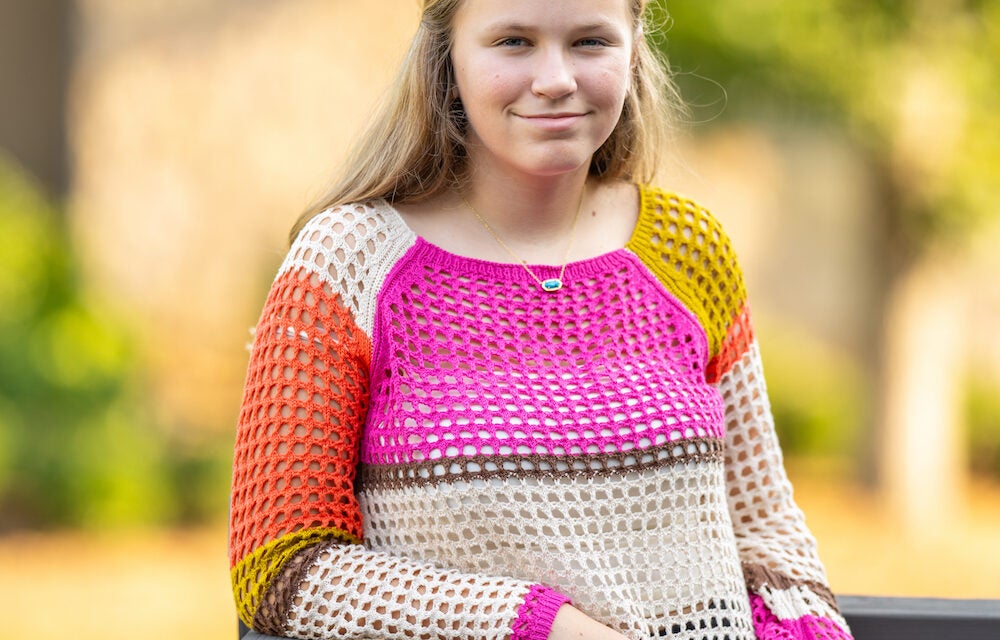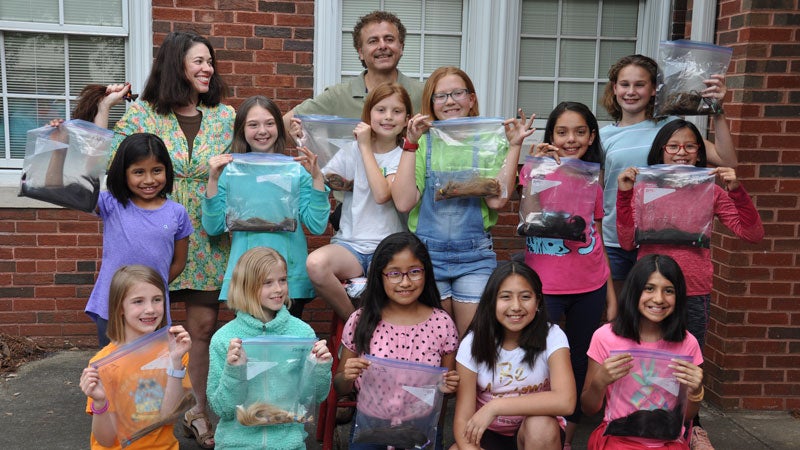By Anna Grace Moore
Photos by Kelsea Schafer & Contributed
Imagine a cold, dark room–pitch black–and from it, one, singular lit candle emerges from the nothingness. That little light, both feeble but bright, shines its light to the far corners of the room, gently opening one’s vision to the once familiar comfort about the room.
It takes only one, small spark–a single flicker of light–to ignite another flame, then another, then more and more until the entire room is ablaze with wondrous warmth and light. Curiously, if one small candle flame can be used to light multiple, setting off a chain reaction, then it only takes one person’s voice–one brave individual sharing her story–to ignite change in the world.
Enter stage right, Violet Levine. Violet is a 14-year-old freshman at Indian Springs School, a midfielder on the varsity soccer team, a stellar student and most importantly, an advocate for Type 1 Diabetes “T1D” research and awareness.
When she was 10-years-old, Violet was diagnosed with T1D while vacationing with her family at Universal Studios. She first noticed her excessive need to drink more water, her feeling woozy and her vision becoming blurry, which is what she says alerted her and her parents that something was wrong.
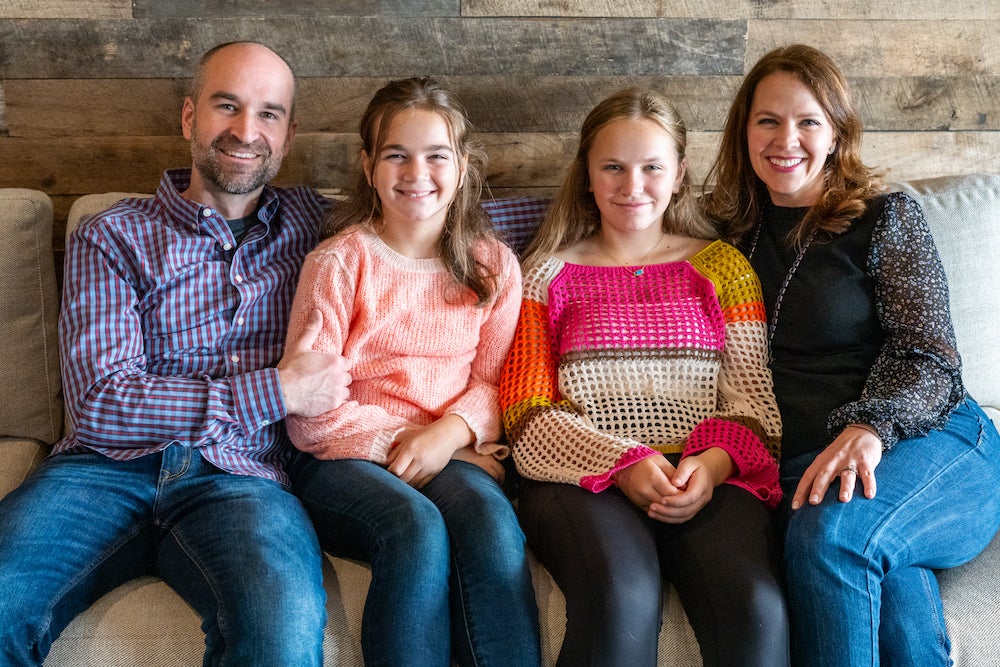
Violet’s parents, Bob and Emily Levine, have a nephew with T1D, so they acted upon Violet’s symptoms as soon as they arose, getting her an at-home blood sugar test that day. Violet’s readings were high, so Bob and Emily immediately took Violet to the emergency room, where she was officially diagnosed.
Although living with T1D presents difficult challenges, Violet refuses to let her disease control her happiness.
“I have to pay more attention than my friends [when eating], and I have to make sure that I give myself the right amount of insulin and be careful with the amount of carbs I eat,” Violet says. “Sports can definitely be hard sometimes when my blood sugar is too high or too low, but I do feel like I have a pretty good control over it.”
Emily agrees, saying Violet is an inspiration to her and the rest of their family.
“She’s really one of the toughest kids that you’ll meet,” Emily says. “We left the hospital and within the first two days, she was doing all of her own finger pricks. Within the first week, she was giving herself her own injections. Sometimes it can weigh heavily on all of us, but she handles it with such strength and grace. It impresses us with the extra load that she deals with.”
This past summer, Violet continued to impress her family and friends by taking on what she says was one of the most important roles of her life: participating in the Juvenile Diabetes Research Foundation “JDRF” Children’s Congress.

From Sunday, July 9-Tuesday, July 11, the JDRF hosted its first in-person Children’s Congress in Washington, D.C. since 2019, giving selected delegates an opportunity to meet with members of Congress and discuss solutions for issues surrounding T1D. One hundred and sixty-three young people–ages 4 to 17–gathered together to meet with their state’s legislators to advocate specifically for strides in T1D research and funding.
Founded in 1999 by then 9-year-old Tommy Solo and his family, the JDRF Children’s Congress was created to not only give young people a voice to educate others about T1D, but also to encourage Congress to increase funding for research. Since its inception, 11 Children’s Congresses have commenced in Washington, D.C., involving more than 1,000 young people across the United States and beyond.
The 2023 Children’s Congress’ main two concerns, reauthorization of the Special Diabetes Program “SDP” and the insulin affordability crisis, were hot topics for roundtable discussions and one-on-one meetings with legislators. Violet says being a part of such a monumental effort is a privilege she will never forget.
“I talked about my experience having diabetes for the hope of trying to work towards lower prices on insulin and other supplies–better health care for people,” Violet says. “My family has the resources to afford all of the things I need, but there’s a lot of people that can’t [afford these expenses].”
Violet believes that every person living with T1D should have affordable access to insulin, pumps, monitors and anything else they need to live a full life with this disease. It’s long past time for Congress to create change for those in need, she says.
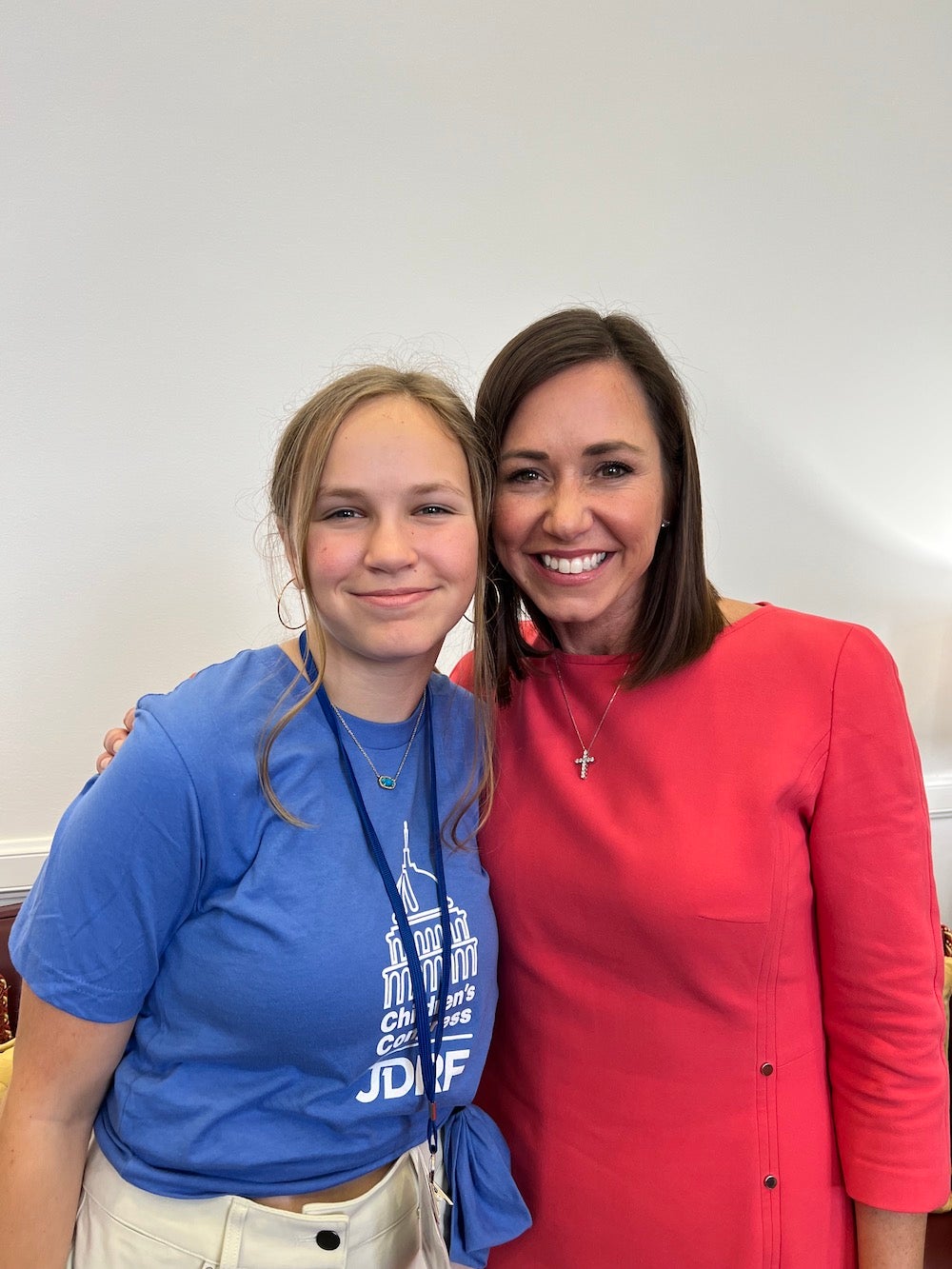
Violet’s insulin pump, the Omnipod Dash, is one of the only tubeless insulin pumps, and she says she enjoys using it because she can stay active easier. Her glucose monitor, which is the Dexcom G7, is also what she says is one of the most convenient monitors in the market.
“Violet uses a fairly sophisticated closed-loop system, where the continuous glucose monitor ‘CGM’ and the pump actually talk to each other, and everything is controlled by her smartphone,” Bob says. “Her insulin delivery changes throughout the day, depending on what her blood sugar is predicted to be.”
Emily says the costs associated with T1D are extremely high, and her family is blessed to be able to afford such expenses. But, for those uninsured, life with T1D looks very different, and someone’s income should not dictate her right to receive affordable healthcare.
According to jdrf.org., “The SDP currently provides $150 million annually to T1D research through the National Institutes of Health “NIH.” The SDP is set to expire in September, and renewing it is JDRF’s biggest priority–and the number one job for delegates.”
During the 2023 Children’s Congress, Violet and the other delegates–representing all 50 states–met at Capitol Hill for a Senate Appropriations Committee hearing, featuring Sens. Patty Murray, Susan Collins and Jeanne Shaheen. In a chamber full of delegates and their families, five individuals spoke about life with T1D, including Griffin Rodgers, MD, Director, National Institute of Diabetes and Digestive and Kidney Diseases; James “Jimmy Jam” Harris; and Aaron Kowalski, Ph.D, JDRF CEO.
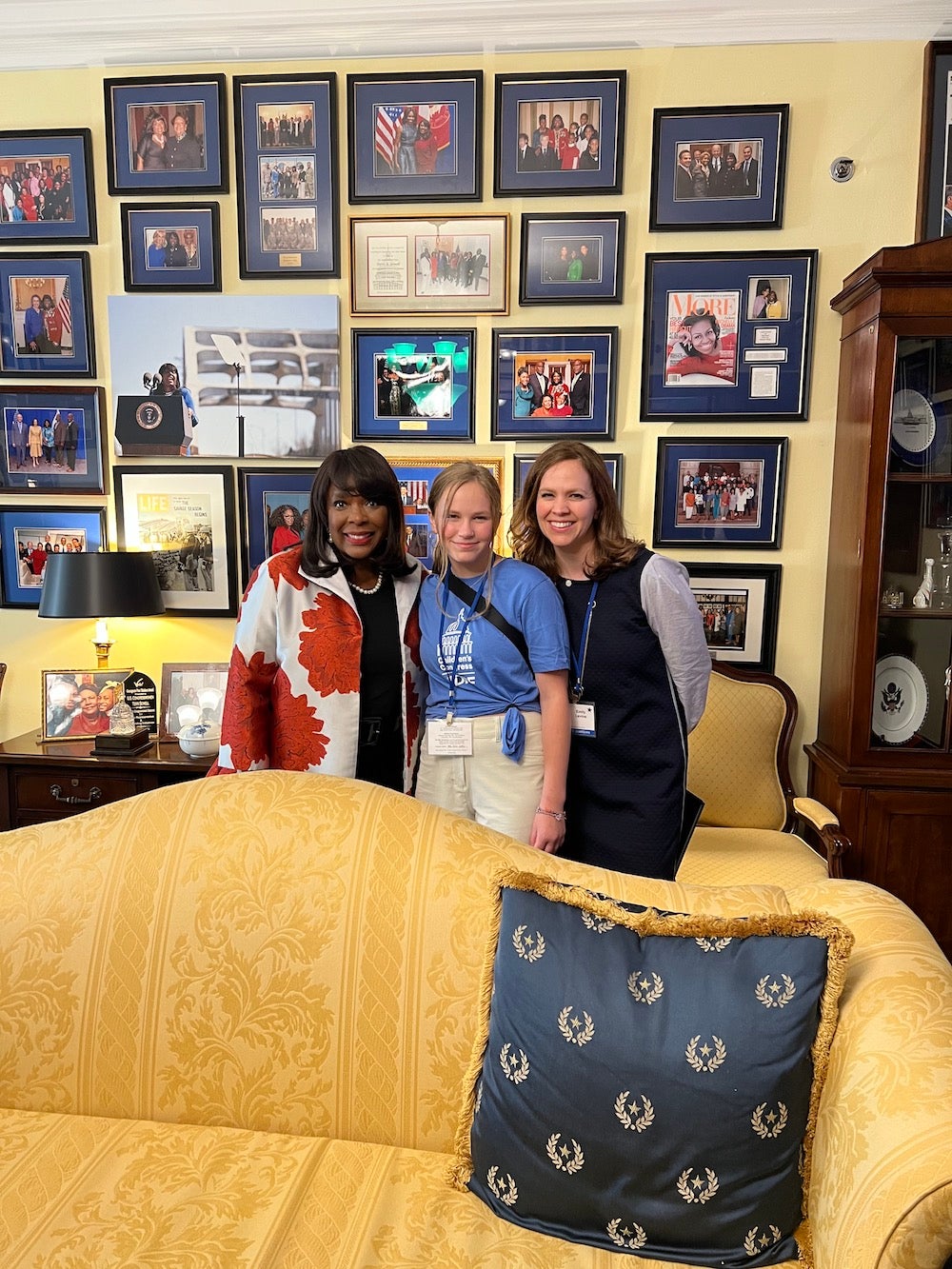
After the hearing, delegates met individually with their state legislators to communicate crucial solutions for T1D funding. Some delegates, who had previously taken part in T1D clinical trials, met with Food and Drug Administration “FDA” Food Commissioner Robert M. Catliff, MD, to discuss from their experiences what could be improved in clinical trials.
Though the three-day summit was short, 163 delegates and others carried out 239 discussions with members of Congress in hopes of gaining Congress’ support for renewing the SDP and lowering the cost of insulin and needs associated with T1D. Violet believes it only takes one person to make a difference, and together, the Children’s Congress will help pave the way for a cure for T1D.
If a 14-year-old girl from Homewood can make her voice heard by lobbying Congress to recognize and support the needs of an entire community, just think what she will do to inspire future generations to come. With Violet Levine at its forefront, the cure for T1D may be just around the corner.
To learn more about what patrons can do to find and fund the cure for T1D or for general information on the JDRF, visit jdrf.org.
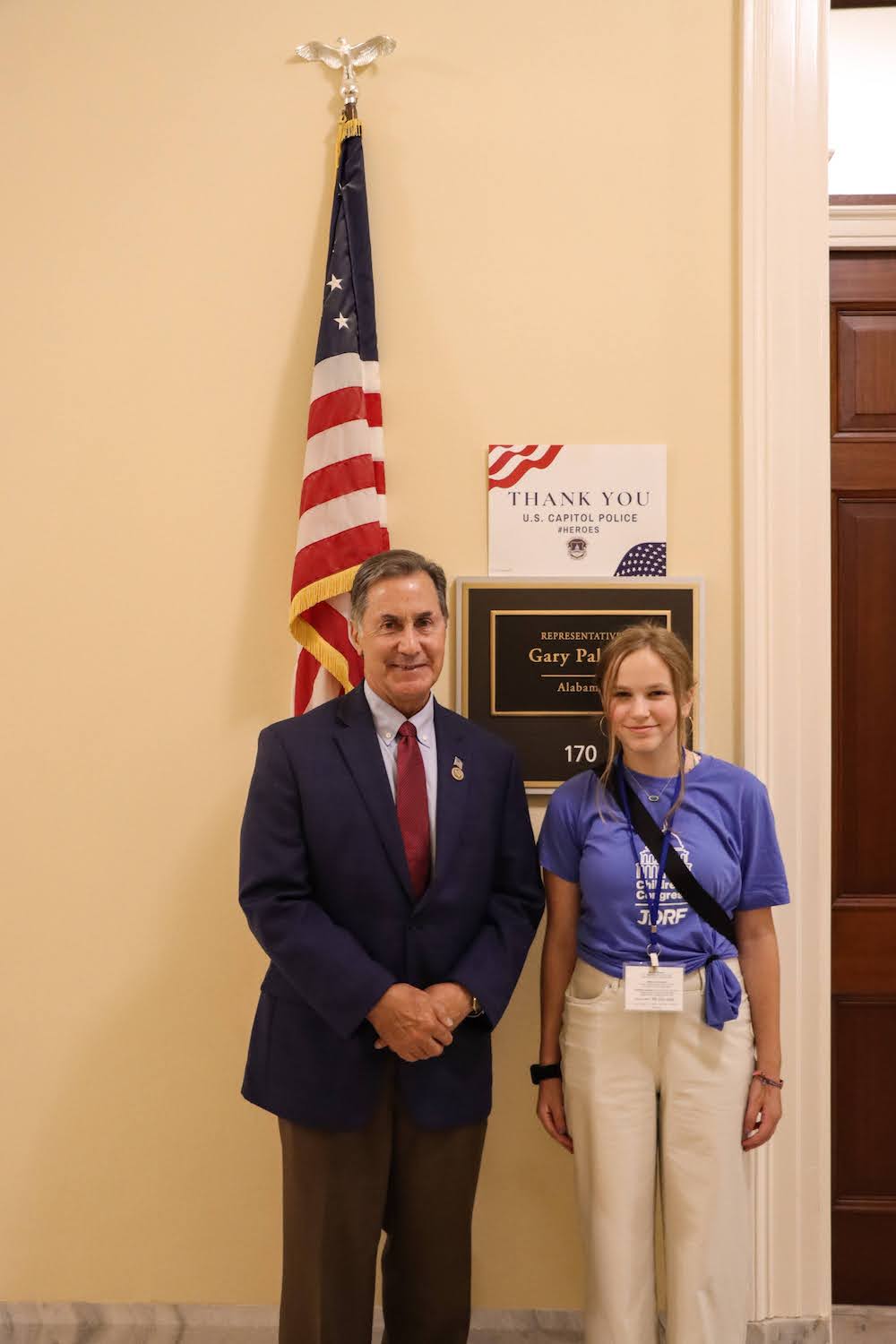
Type 1 Diabetes
Type 1 Diabetes is a type of autoimmune disease occurring in children and even adults, too. T1D occurs when the body’s immune system mistakenly destructs insulin-producing cells in the pancreas. Those living with T1D rely on insulin injections or pumped insulin to live.
Symptoms of T1D include:
- Frequent urination
- Increasing thirst
- Dry mouth
- Fatigue
- Weakness
- Inexplicable weight loss
- Increased appetite
- Skin healing more slowly from cuts and scrapes

